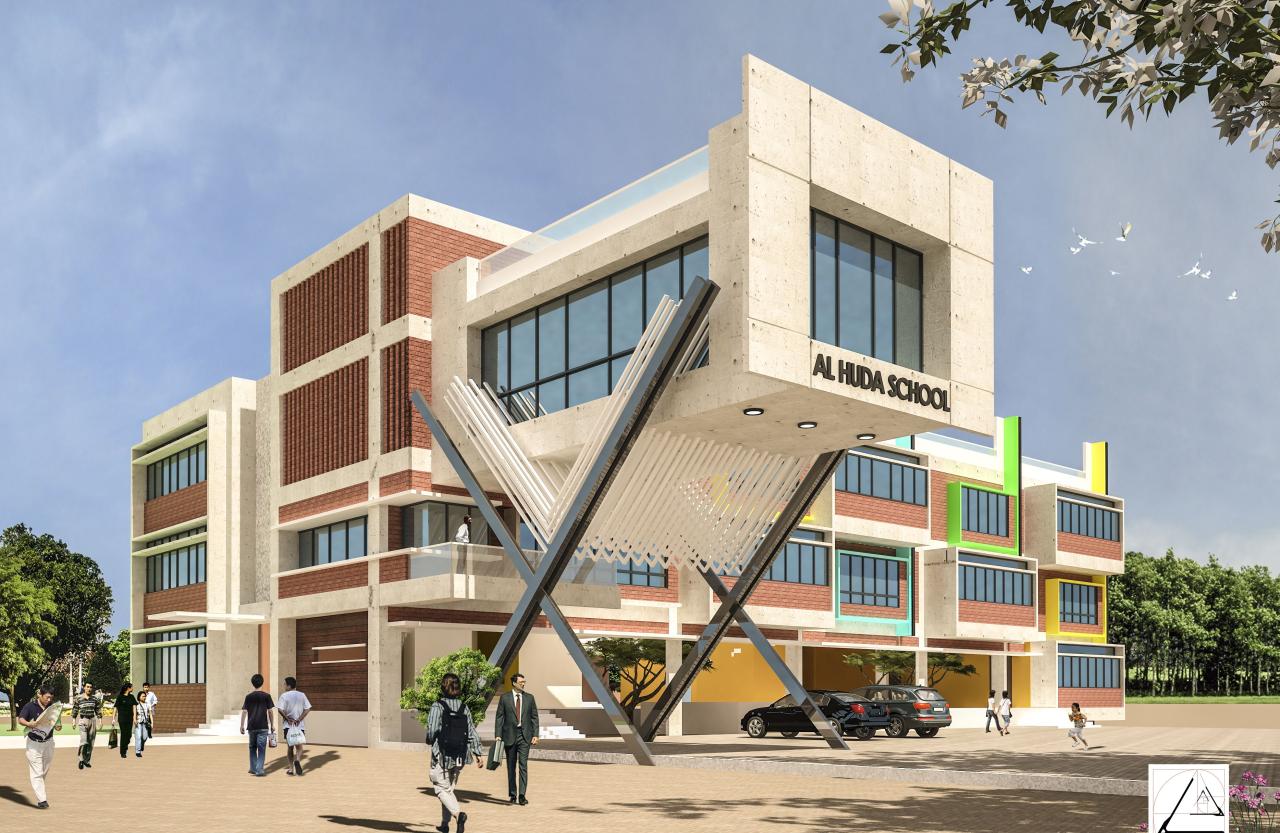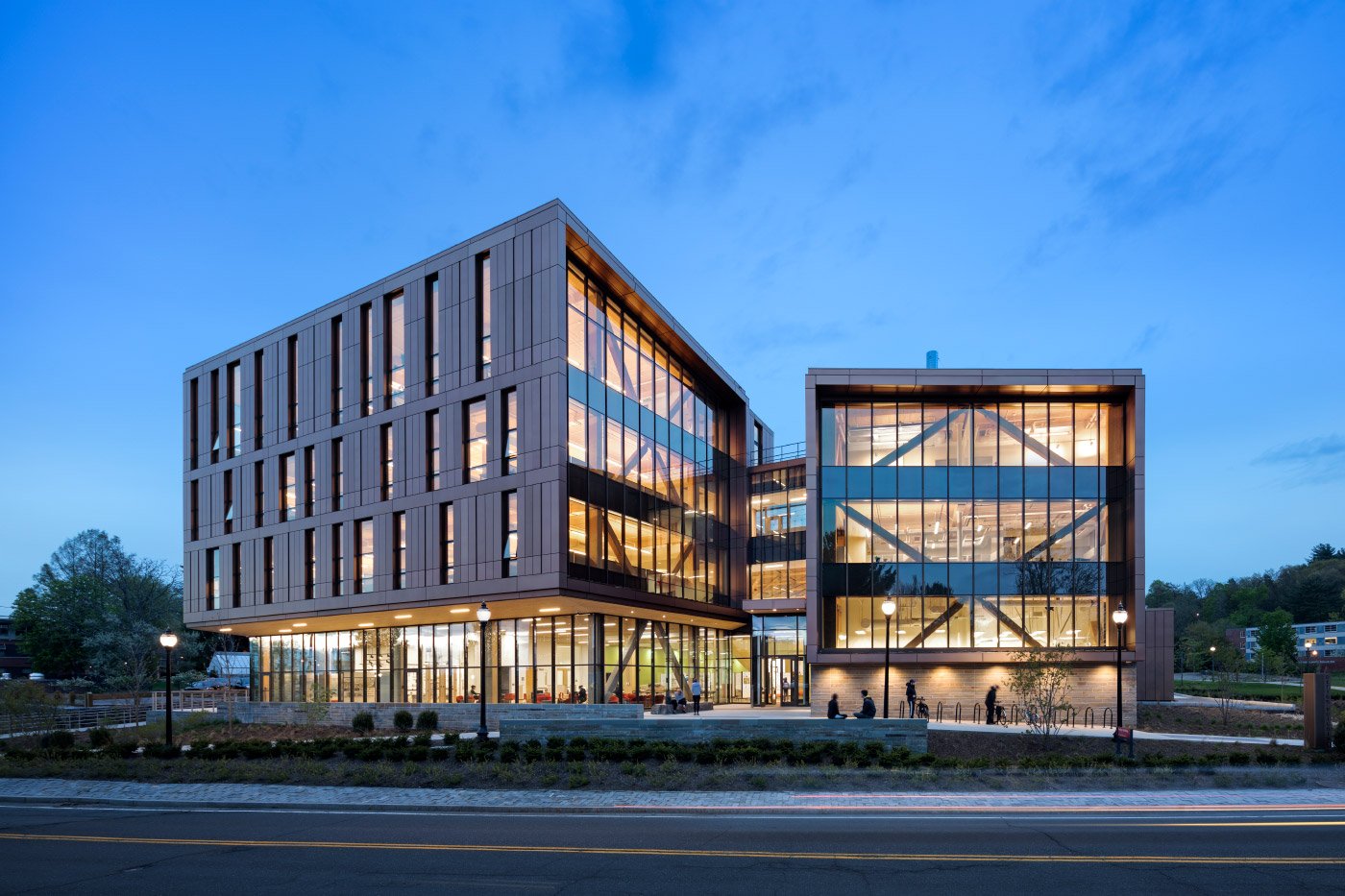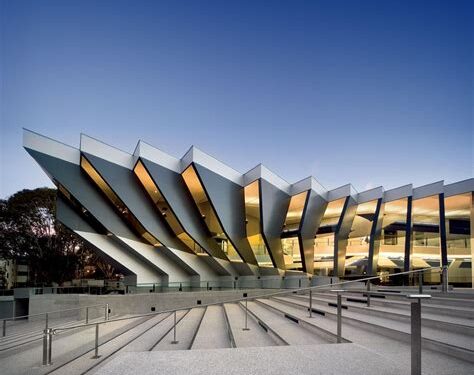Architectural education stands at a pivotal crossroads. Traditional values and methods now converge with modern demands, creating a dynamic yet challenging landscape for budding architects and educational institutions alike. In today’s interconnected world, where technology, sustainability, and globalization are reshaping industries, architectural education must evolve to prepare students for the multifaceted challenges of tomorrow. This article delves deep into the modern challenges facing architectural education, explores emerging trends, and provides actionable recommendations for educators, institutions, and students to navigate these turbulent times.
Architectural education has long been revered for its creativity, rigorous training, and its balance between artistic expression and technical precision. However, the globalized economy and rapid technological advancements have introduced a host of new challenges. Today’s students are expected to master not only design and construction techniques but also digital technologies, sustainability principles, and cross-cultural communication.
Institutions must therefore re-examine curricula to integrate modern methodologies without undermining the rich traditions of architectural training. The future of architectural education depends on balancing heritage and innovation, merging classic design concepts with the digital and sustainable demands of the 21st century.
The Evolving Landscape of Architectural Education
Architectural education historically focused on drawing, model-making, and understanding construction materials. Over the decades, it has expanded to include computer-aided design (CAD), building information modeling (BIM), and sustainable practices. However, these changes have introduced new complexities, which can be grouped into several major themes.
A. Technological Advancements
-
Digital Transformation
The digital era has revolutionized many fields, including architecture. The rise of CAD, BIM, and virtual reality (VR) tools has transformed design processes. Educators must now balance the teaching of hand-drawing techniques with digital skills.-
A. Integration of Software Tools: Institutions need to incorporate advanced software training into the curriculum.
-
B. Virtual Simulations: Use of VR and augmented reality (AR) allows students to experience designs in immersive environments.
-
C. Data-Driven Design: Leveraging data analytics to predict design performance and sustainability.
-
-
Automation and Artificial Intelligence (AI)
AI is rapidly entering various stages of design and construction. While it offers immense potential for optimizing processes, it also requires a fundamental shift in skill sets.-
A. Machine Learning Applications: Educating students on how AI can predict structural behavior and optimize design parameters.
-
B. Automated Design Tools: Understanding the limitations and ethics of automation in creative practices.
-
C. Future-proof Curriculum: Balancing technical instruction with creative autonomy.
-
B. Sustainability and Environmental Responsibility
Modern architectural education must prioritize sustainable design in the face of climate change and resource scarcity. Sustainable architecture is not merely a trend; it is a necessity.
-
A. Green Building Techniques: Courses must cover sustainable materials, renewable energy integration, and waste reduction.
-
B. Environmental Impact Analysis: Training students to assess and mitigate negative environmental impacts.
-
C. Climate-Responsive Design: Teaching how to design buildings that respond to local climatic conditions.
C. Globalization and Cultural Sensitivity
The architecture profession is becoming increasingly global. Students now work on projects in diverse geographic and cultural contexts, which makes cultural sensitivity and global awareness crucial.
-
A. Cross-Cultural Communication: Developing skills for effective communication across cultures.
-
B. Global Design Standards: Familiarizing students with international building codes and practices.
-
C. Collaborative Projects: Encouraging teamwork with international counterparts through student exchange programs and collaborative virtual design studios.
D. Economic and Financial Realities
The financial landscape of architectural education is evolving. Budget cuts and reduced public funding in many regions make it challenging for institutions to invest in new technologies and resources.
-
A. Funding Constraints: Addressing limited resources while still investing in state-of-the-art technologies.
-
B. Tuition and Accessibility: Balancing the cost of education with the need for an inclusive and diverse student body.
-
C. Industry Partnerships: Creating collaborations with private enterprises to secure funding and provide real-world project experience.
E. Changing Professional Landscapes
Architectural careers are shifting. The traditional roles of architects are evolving as construction practices integrate more technology and multidisciplinary approaches.
-
A. Interdisciplinary Knowledge: Students need exposure to fields like urban planning, engineering, and environmental science.
-
B. Entrepreneurship and Innovation: Encouraging entrepreneurial skills to navigate start-ups and innovative design firms.
-
C. Adaptability and Lifelong Learning: Fostering a culture of continuous education to adapt to new developments throughout one’s career.
Challenges in Curriculum Development and Teaching Methodologies
Adapting to these modern changes means educational institutions are forced to rethink traditional teaching methods. The transformation in curricula is one of the most significant challenges of the contemporary architectural education system.
A. Incorporating Emerging Technologies
Modern architectural education must incorporate technology without losing the foundation of traditional methods. This dual approach is essential.
-
A. Blended Learning Environments: Combining classroom instruction with hands-on digital practice.
-
B. Faculty Training and Development: Ensuring instructors are proficient in the latest technological trends.
-
C. Flexible Curriculum Design: Allowing the course content to evolve as new technologies emerge.
B. Balancing Theory and Practice
Theoretical knowledge must be seamlessly connected with practical application to prepare students for real-world challenges.
-
A. Studio-Based Learning: Emphasizing hands-on studio work where theory is applied in realistic design projects.
-
B. Internship Programs: Strengthening industry links through mandatory internships and real-world project collaborations.
-
C. Interdisciplinary Workshops: Engaging students with professionals from various fields to understand the interconnected nature of modern architecture.
C. Enhancing Critical Thinking and Creativity
Modern education must nurture not only technical competence but also critical thinking and creative problem-solving.
-
A. Project-Based Assignments: Challenges that require innovative solutions, balancing creativity and feasibility.
-
B. Critique Sessions: Regular review sessions where students receive constructive feedback from peers and experts.
-
C. Innovation Labs: Dedicated spaces for experimental design and collaborative innovation projects.
Addressing Financial and Institutional Constraints
The changing economic landscape poses significant challenges to architectural institutions. Ensuring that students receive quality education while managing financial limitations is a delicate task.
A. Seeking Alternative Funding Sources
Institutions must look beyond traditional funding channels to secure the resources needed for modernization.
-
A. Government Grants and Subsidies: Actively applying for grants that support technology and sustainable practices in education.
-
B. Corporate Sponsorships: Partnering with industry giants to fund research and development projects.
-
C. Crowdfunding Initiatives: Engaging alumni and the community in funding innovative educational projects.
B. Investing in Infrastructure and Resources
Modern architectural education requires up-to-date infrastructure and resources to support contemporary practices.
-
A. Modern Laboratory Spaces: Establishing cutting-edge digital fabrication labs and VR studios.
-
B. Resource Sharing Networks: Collaborating with other institutions to share costly resources and digital platforms.
-
C. Sustainable Investment: Focusing on long-term, energy-efficient infrastructures that reduce operational costs over time.
C. Balancing Cost and Quality
Maintaining high-quality education while keeping tuition fees accessible is an ongoing challenge.
-
A. Scholarship Programs: Implementing robust scholarship and financial aid programs to attract diverse talent.
-
B. Cost-Effective Digital Tools: Leveraging open-source software and cost-effective digital tools that meet educational needs.
-
C. Streamlined Administrative Processes: Using technology to reduce administrative overheads, thereby lowering overall costs.
The Role of Technology in Modern Architectural Education
Technology is no longer just an additional tool; it is at the core of modern architectural education. It influences design, construction, and even the way information is shared.
A. Digital Platforms and Online Learning
With the rise of online education, architectural programs have had to adapt quickly to remote learning environments.
-
A. Virtual Classrooms: Enhancing digital learning experiences with interactive virtual classrooms and real-time project collaboration.
-
B. Online Resource Libraries: Providing students with a vast repository of digital resources, including e-books, research papers, and design software tutorials.
-
C. Remote Critique Sessions: Using video conferencing tools to conduct design reviews, workshops, and international collaborations.
B. The Impact of Building Information Modeling (BIM)

BIM represents a crucial intersection of technology and architectural practice. It has redefined workflows, management, and collaboration in the field.
-
A. Enhanced Design Precision: BIM allows for accurate modeling and real-time adjustments, improving overall design quality.
-
B. Collaborative Efficiency: It facilitates greater collaboration among architects, engineers, and contractors.
-
C. Sustainability Integration: BIM software can simulate building performance, enabling more sustainable and cost-effective designs.
C. Virtual and Augmented Reality (VR/AR)
VR and AR are rapidly changing the way architecture is taught and experienced.
-
A. Immersive Learning Experiences: Students can explore their designs in a virtual environment, experiencing scale and space as if they were real.
-
B. Enhanced Client Engagement: VR presentations enable clients to visualize projects prior to construction, reducing the need for extensive revisions.
-
C. Future-Ready Skills: Proficiency in VR and AR prepares students for future roles that integrate these emerging technologies into everyday practices.
Globalization, Cultural Diversity, and Architectural Identity
In a world where architectural projects span continents, understanding and appreciating cultural diversity is paramount. The globalization of the profession brings with it unique educational challenges and opportunities.
A. Cross-Cultural Collaboration and Exchange
Modern architectural education must foster an environment where international ideas and practices converge.
-
A. Exchange Programs: Encouraging student and faculty exchanges to broaden perspectives.
-
B. Collaborative International Projects: Projects that bring together students from different cultural backgrounds to solve global design challenges.
-
C. Cultural Sensitivity Workshops: Training students to appreciate diversity and integrate cultural considerations into their designs.
B. The Challenge of Preserving Architectural Heritage
While innovation is crucial, preserving architectural heritage remains equally important. Balancing historical context with modern innovation provides a holistic approach to design.
-
A. Historical Context Courses: Integrating history and theory to understand the evolution of architectural styles.
-
B. Conservation Projects: Hands-on projects that involve the restoration and adaptive reuse of historical structures.
-
C. Digital Archiving: Using technology to archive and digitally preserve historical designs and methodologies.
C. Shaping Architectural Identity
As architecture becomes more globalized, the challenge lies in maintaining a distinct architectural identity that reflects local culture and history.
-
A. Local Design Narratives: Encouraging projects that tell the story of local communities and traditions.
-
B. Contextual Design Principles: Teaching design that is sensitive to the local environment, climate, and socio-economic conditions.
-
C. Inclusive Practices: Promoting inclusive design that celebrates diversity and caters to a wide range of cultural expressions.
Future Directions in Architectural Education
Looking forward, it is clear that architectural education must be agile, adaptable, and forward-thinking. The following strategies can help usher in a new era of dynamic and effective learning.
A. Embracing Interdisciplinary Approaches
Integrating disciplines beyond traditional architecture is crucial for comprehensive education.
-
A. Collaboration with Engineering and Urban Planning: Creating joint courses and projects to cultivate holistic skill sets.
-
B. Incorporating Business and Entrepreneurship: Equipping students with the knowledge to manage projects and start their own practices.
-
C. Integration of Environmental Science: Ensuring that sustainable design is not just a topic but a core component of every project.
B. Leveraging Global Networks
Building global networks can significantly enhance the learning experience.
-
A. International Conferences and Workshops: Encouraging students and faculty to participate in international dialogues.
-
B. Virtual Global Classrooms: Utilizing digital platforms to connect students worldwide.
-
C. Collaborative Research Projects: Fostering research partnerships between institutions from different regions.
C. Continuous Curriculum Innovation
Educational curricula should be living documents that evolve with industry trends.
-
A. Regular Curriculum Reviews: Periodic assessments to incorporate the latest technological and methodological advancements.
-
B. Feedback-Driven Reforms: Integrating feedback from alumni, industry professionals, and current students.
-
C. Pilot Programs and Experimental Courses: Testing innovative teaching methods before broader implementation.
Recommendations for Educators and Institutions

To successfully navigate the modern challenges, educators, and institutions must adopt proactive strategies.
A. Prioritize Professional Development
Investing in continuous professional development for faculty is essential.
-
A. Ongoing Technology Training: Ensure that instructors remain current with emerging digital tools and software.
-
B. Workshops and Seminars: Host regular events that focus on modern pedagogical techniques and industry trends.
-
C. Collaborative Networks: Form communities of practice with peers and industry experts to share knowledge.
B. Enhance Student Engagement
Student engagement should be at the forefront of modern architectural education.
-
A. Interactive Learning Platforms: Adopt digital platforms that facilitate interactive and real-time learning.
-
B. Student-Led Initiatives: Encourage students to spearhead community projects and innovation labs.
-
C. Mentorship Programs: Pair students with experienced professionals to guide their career development.
C. Foster a Culture of Innovation
Creating an environment that rewards innovation is key.
-
A. Innovation Incubators: Develop campus spaces dedicated to experimental design and entrepreneurship.
-
B. Competitions and Challenges: Organize design competitions that encourage innovative solutions to current architectural challenges.
-
C. Cross-Disciplinary Collaboration: Encourage collaborations beyond the school of architecture to bring in fresh perspectives.
Conclusion
Architectural education faces modern challenges on multiple fronts—from rapid technological evolution and sustainability imperatives to global cultural integration and economic constraints. Overcoming these challenges requires a reimagining of traditional teaching approaches, embracing digital tools, and fostering interdisciplinary collaboration. Institutions must invest in modern technology, update curricula regularly, and support both educators and students through continuous professional development and innovative learning practices.
The future of architectural education is not solely about preserving classical methodologies, but about blending them with forward-thinking approaches that prepare students for a world of constant change. By addressing these challenges head-on, educational institutions can equip the next generation of architects with the skills, knowledge, and adaptability required to lead the profession into a dynamic future.
In summary, modern architectural education is evolving into a rich, multifaceted discipline that integrates technology, sustainability, global cultural exchange, and innovative teaching methodologies. This transformation is imperative not only for the success of individual professionals but also for the advancement of the architectural field as a whole. As educators and institutions adapt to these new realities, they pave the way for a future where architects are better prepared to tackle complex challenges and design environments that are both beautiful and sustainable.






